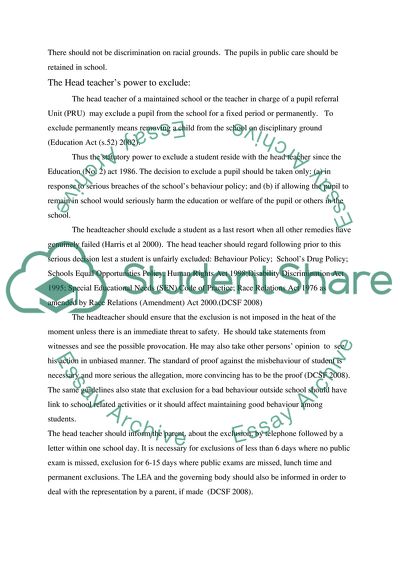Cite this document
(“To What Extent Can It Be Argued that the Law Relating to School Assignment”, n.d.)
To What Extent Can It Be Argued that the Law Relating to School Assignment. Retrieved from https://studentshare.org/education/1719381-to-what-extent-can-it-be-argued-that-the-law-relating-to-school-exclusions-favours-headteachers-and-governors-at-the-expense-of-pupils-and-parents
To What Extent Can It Be Argued that the Law Relating to School Assignment. Retrieved from https://studentshare.org/education/1719381-to-what-extent-can-it-be-argued-that-the-law-relating-to-school-exclusions-favours-headteachers-and-governors-at-the-expense-of-pupils-and-parents
(To What Extent Can It Be Argued That the Law Relating to School Assignment)
To What Extent Can It Be Argued That the Law Relating to School Assignment. https://studentshare.org/education/1719381-to-what-extent-can-it-be-argued-that-the-law-relating-to-school-exclusions-favours-headteachers-and-governors-at-the-expense-of-pupils-and-parents.
To What Extent Can It Be Argued That the Law Relating to School Assignment. https://studentshare.org/education/1719381-to-what-extent-can-it-be-argued-that-the-law-relating-to-school-exclusions-favours-headteachers-and-governors-at-the-expense-of-pupils-and-parents.
“To What Extent Can It Be Argued That the Law Relating to School Assignment”, n.d. https://studentshare.org/education/1719381-to-what-extent-can-it-be-argued-that-the-law-relating-to-school-exclusions-favours-headteachers-and-governors-at-the-expense-of-pupils-and-parents.


